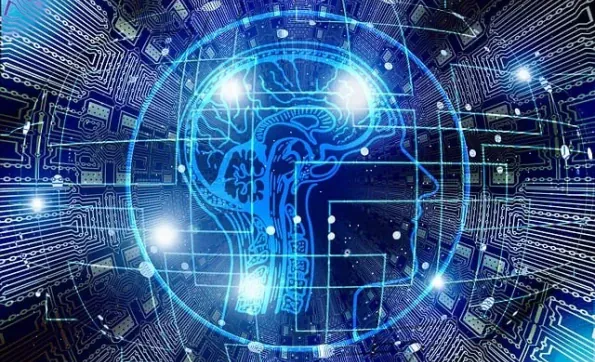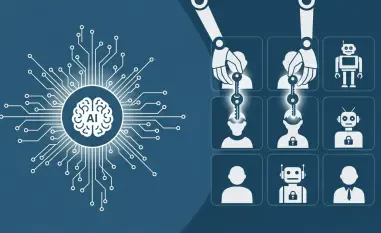The rise of generative AI has not only transformed the way organizations operate but also introduced unprecedented security challenges that must be addressed urgently. Steve Tait, Chief Technology Officer at Skyhigh Security, sheds light on the evolving landscape of modern technology and underscores the importance for enterprises to adapt their security frameworks to safeguard organizational data effectively.
The Advanced Nature of Current Technology
The Intersection of AI and Organizational Data
Technology has advanced at a breakneck speed, ushering in an era where generative AI has significantly altered the digital landscape. This transformation poses both opportunities and risks for organizations. On one hand, AI offers the potential for improved efficiencies, resource management, and innovation. On the other, it introduces novel vulnerabilities within organizational data structures that traditional security measures may not sufficiently cover.
Enterprises are now grappling with the reality of data that is complex, vast, and continuously evolving. Traditional digital transformation methods are increasingly falling short, as they were never designed to handle the specific security threats posed by AI. The rise of sophisticated AI algorithms necessitates a revamp of existing security protocols. In this new paradigm, data isn’t merely at rest and in transit; it is manipulated in real-time to generate new insights and outputs, making static security measures obsolete.
Lagging Organizational Adaptation
While technology has surged ahead, many organizations find themselves playing catch-up. Despite the adoption of digital solutions, the majority lack the robust AI-specific security frameworks required to contend with new risks. There is a discernible gap between the pace at which AI technology is evolving and the speed at which enterprises are adapting their security measures. This lag potentially exposes critical data to exploitation by malicious actors who are well-versed in advanced hacking techniques.
According to Steve Tait, enterprises need to adopt a forward-thinking mindset, anticipating threats rather than reacting to them. This proactive approach requires investments in training, updated security infrastructure, and ongoing vigilance. The challenge is not only technical but also cultural, as organizations must foster an environment where continuous learning and adaptation are embedded into the fabric of their operations.
The Specific Security Challenges of Generative AI
Novel Vulnerabilities and Exploits
Generative AI, while a technological marvel, presents a slew of unique security challenges. Unlike traditional AI, which typically follows pre-defined algorithms, generative AI creates new content, which can be unpredictable and difficult to regulate. This unpredictability can be exploited in various ways, such as generating deceptive deepfakes, or forging data and documents that seem authentic but are inherently fraudulent. These vulnerabilities are particularly concerning because they render many existing verification and authentication processes obsolete.
Deepfakes, for instance, can undermine trust in digital communications. What once was a surefire method of verification—recognizing a face or a voice in a video—can now be digitally manipulated to near perfection. Similarly, generative AI can produce seemingly genuine yet completely fictitious financial reports, leading to disastrous decisions if not properly flagged. As such, traditional security measures need to be significantly upgraded to detect and mitigate these new forms of threats effectively.
Proactive Risk Management
Experts in the field stress that generative AI’s risks require an overhaul in risk management strategies. The cornerstone of this strategy is to transition from reactive to proactive security measures. This involves constant monitoring, real-time analysis, and the deployment of AI-based threat detection systems that are capable of identifying anomalies indicative of security breaches. Additionally, enterprises should prioritize transparency and maintain an ongoing dialogue with stakeholders about the potential risks and implemented safeguards.
The integration of AI-driven security tools that can autonomously detect deviations from normal patterns is one essential step. Furthermore, regular auditing and updating of AI systems, combined with real-time feedback mechanisms, ensure that security protocols evolve in tandem with emerging threats. By shifting focus from mitigating damage post-incident to pre-empting security breaches, organizations can better protect their critical assets.
The Imperative Need for Continuous Adaptation
Staying Agile in a Rapidly Evolving Environment
The technological environment is evolving at an unprecedented rate, making agility a crucial trait for modern enterprises. The dynamic nature of generative AI necessitates constant observation and adaptation of security measures to remain effective. Organizations must invest in training their workforce to keep up with rapid changes, ensuring employees are equipped with the latest knowledge and tools to combat emerging threats. Commitment to innovation and flexibility in security approaches is fundamental for staying ahead of potential cyber threats.
Steve Tait emphasizes that inflexibility is an enemy in the current landscape. Static security measures will invariably become outdated, leaving organizations vulnerable. By fostering a culture of continuous improvement and encouraging collaboration across departments, enterprises can build a resilient defense mechanism capable of adapting to new challenges as they arise.
The Role of Continuous Learning
The advent of generative AI has revolutionized organizational operations, bringing about remarkable efficiency and innovation. However, it also presents unprecedented security challenges that demand immediate attention. Steve Tait, the Chief Technology Officer at Skyhigh Security, emphasizes the evolving nature of modern technology and the associated risks. He stresses the critical need for enterprises to revamp and adapt their security frameworks.
In a landscape where data is the most valuable asset, protecting organizational information has never been more crucial. With generative AI becoming increasingly integral to business processes, the traditional security models no longer suffice. Enterprises must adopt advanced strategies and tools to mitigate the risks associated with this technology. This includes more robust encryption methods, AI-driven threat detection systems, and comprehensive employee training programs to recognize and address potential security breaches effectively.
As organizations continue to integrate generative AI into their operations, staying ahead of potential threats is essential for maintaining data integrity and safeguarding business interests.













